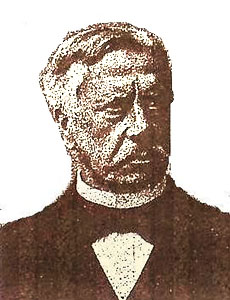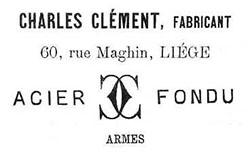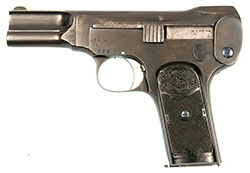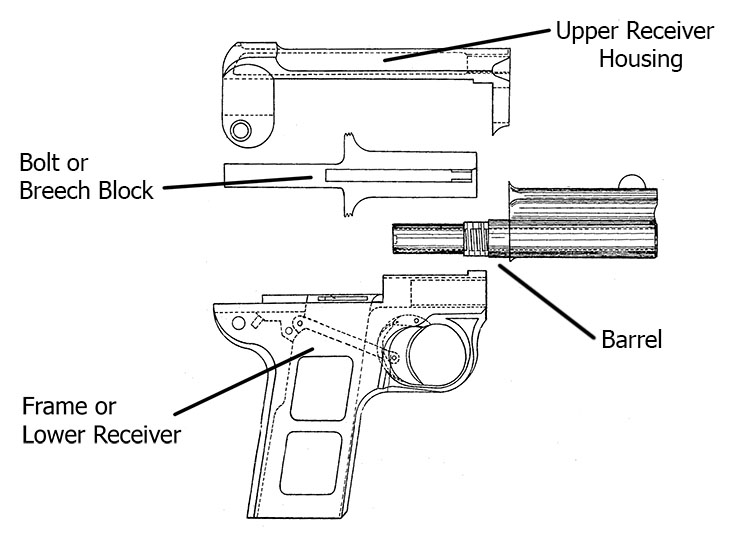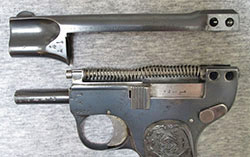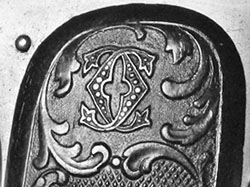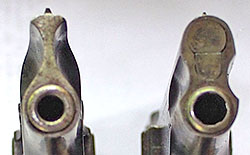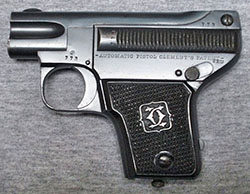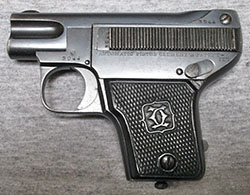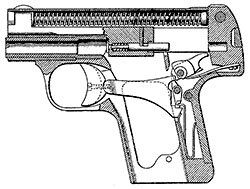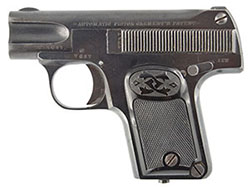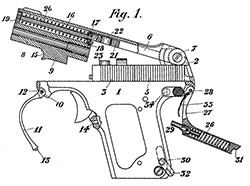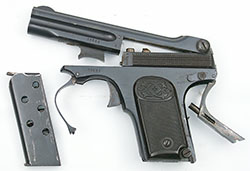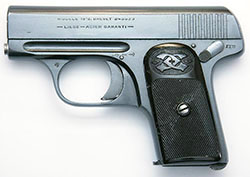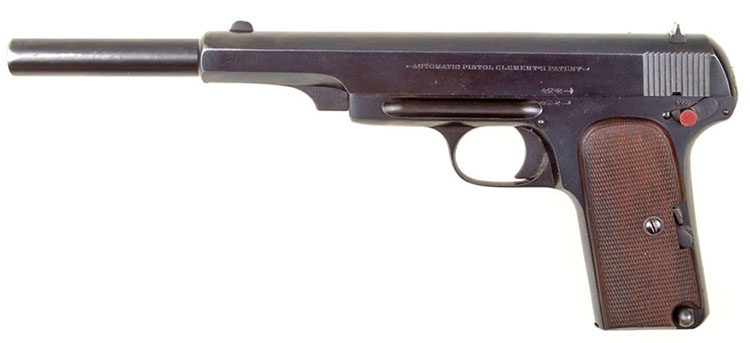 |
|||||||||||||||||||||||||||||||||||||||||||||||||||||||||||||||||||||||||||||||||||||||||||||||||||||||||||||||||||||||||||||||||||||||||||||||||||||||||||||||||||||||||||||||||||||||||||||||||||||||||||||||||||||||||||||||||||||||||||||||||||||||||||||||||||||||||||||||||||||||||||||||||||||||||||||||||||||||||||||||||||||||||||||||||||||||||||||||||||||||||||||||||||||||||||||||||||||||||||||||||||||||||||||||||||||||||||||||||||||||||||||||||||||||||||||||||||||||||||||||||||||||||||||||||||||||||||||||||||||||||||||||||||||||||||||||||||||||||||||||||||||||||||||||||||||||||||||||||||||||||||||||||||||||||||||||||||||||||||||||||||||||||||||||||||||||||||||||||||||||||||||||||||||||||||||||||||||||||||||||||||||||||||||||||||||||||||||||||||||||||||||||||||||||||||||||||||||||||||||||||||||||||||||||||||||||||||||||||||||||||||||||||||||||||||||||||||||||||||||||||||||||||||||||||||||||||||||||||||||||||||||||||||||||||||||||||||||||||||||||||||||||||||||||||||||||||||||||||||||||
|
The Clement Pistols by Ed Buffaloe, Bill Chase,
In 1870 Clément was married to Jeanne Marie Flore Vignoul (1847 – 1871). In 1883 the widower married Marie Joséphine Eve Dolmans, born in 1855. The couple already had a son born in 1876. Clément partnered with Alexandre Fagnus in 1879. Their guns were typically marked FAGNUS A. & C. CLEMENT. The partners manufactured double-action six-shot pin-fire and rim-fire revolvers in 7 mm, 9 mm, and 12 mm, marked “Guardian American Model of 1878”, the smaller guns having a folding trigger. Clément started his own business in 1883 to make various center-fire revolvers, including a Velodog revolver with an internal hammer and a safety lever, a larger eight-shot Velodog with an external hammer, a postman’s revolver apparently made for the Belgian postal service, a patented six-shot top-break revolver, and a mini-Bulldog revolver with folding trigger and a button safety. He also manufactured a replica of the 1851 Colt cap and ball revolver. Typically, his guns were marked C. CLÉMENT over LIEGE. According to Alain Daubresse, in his book Les armuriers Liègeois, he made export revolvers marked “The English Bullock” and “The American Settler,” and others simply marked with his interlaced CC monogram with one letter reversed. Between 1883 and 1895 Clément also manufactured double-barrel shotguns in both hammer and hammerless versions, and Clément is said to have manufactured shotguns for the U.S. retailer J. T. Randall. According to John Walter in his Dictionary of Guns and Gunmakers, a gunmaker by the name of Charles Clement is listed in London directories for 1890 and 1891 at 63 Queen Victoria Street who is likely the Belgian Charles Philibert Clément, though there is no firm proof. A Charles Clement of Liege is listed in the Official Catalogue of the World’s Columbian Exposition, 1893, as an exhibitor in the categories of military small arms and sporting firearms. In May 1902 the Waffenzeitung reported that the Clément factory in Liege, with 250 employees, was destroyed by fire. The damage was estimated at 300,000 Belgian Francs. Depending on the method of calculation, this is the equivalent of somewhere between 2 and 3.5 million dollars in today’s money. This fire may have marked the end of one phase of his business and the beginning of a new one, as we will see below. Alain Daubresse reports that “at the end of his life CLEMENT sold his revolver manufacture department to NEUMANN Bros, and focused only on semi-automatic pistols.” He does not provide a date for this sale.
On 27 September 1902 Julien Warnant-Creon was granted Belgian patent number 165988 for a “Pistolet à répétition” (see patents below). Julien Warnant was a brother of Jean Warnant, who is most famous for his design of the ingenious revolver lock consisting of only four components. The first Belgian patent dates from 1874, and many subsequent revolvers were based on it, e. g. the British Kaufmanns and the Swiss army revolvers. Both Warnant brothers also had an interest in self-loading pistols. Jean Warnant later designed the self-loading pistol which was manufactured by Nicholas Pieper, the design for which Pieper also sold to Steyr and which became known as the 1908 Steyr-Pieper. After Julien married he changed his name to Warnant-Créon. On 31 October 1902 Julien Warnant signed a contract to sell all rights to his new patent to Charles Clément for the sum of 8,000 Belgian Francs. He provided detailed drawings of the design, as well as a working model of the pistol. In addition, he agreed to transfer all future improvements to the pistol to Clément. So we see that after Clément’s gun factory burned to the ground in the Spring of 1902, in the Fall of the same year he bought the Warnant patent with the intention of manufacturing self-loading pistols. Charles Clément died in May of 1913 and, just before the end of the year, his widow, Joséphine, in conjunction with Victor Loiselet, filed a patent for a method of barrel retention. Within three weeks they filed a second patent for a mechanism to lock the transfer bar when the magazine is empty. Victor Loiselet was an artillery colonel active in late 1914 in the defense of Liège against the Germans. In particular, he was responsible for destroying bridges. In 1915, he was head of the group of Belgian armorers who went to Birmingham and began gun production in exile there. In 1919, he returned to Belgium and became director of the Manufacture d'Armes de l'Etat. Loiselet died in 1923 as a retired major-general. Clément’s company name officially existed until 1954 when it was taken over by Neumann Frères. But these two companies had connections early on. For example, Neumann had purchased Clément’s revolver business, and in 1910, the Clément-Neumann self-loading carbine was the result of a joint-venture between the two companies. Likewise, Neumann and Warnant also had business connections going back to 1887 or ‘88. So, we see that Belgian gunmakers were sometimes partners as well as competitors.
In researching Belgian patents, we have learned that patents were granted without examination in Belgium. Each patent file is accompanied by an affidavit that states: This patent is granted to him without prior examination, at his own risk and peril, without any guarantee of the reality, the novelty or merit of the invention, or the accuracy of the description, and without prejudice to the rights of third parties. The process typically took only a few days or weeks, whereas in other countries the patent had to be examined and approved and the process often took months or years.
Clément’s contract with Warnant stipulated that Clément would have the right to take out foreign patents on the invention, which he did, and that any improvements to the invention by Warnant would become Clément’s property without further compensation. The contract also stipulated that for the 20-year patent period Warnant would not create or manufacture any kind of similar automatic pistol that would compete with Clément’s pistol. We have no evidence of Warnant’s further involvement in subsequent patents filed by Clément, though the possibility cannot be discounted.
This early design saw limited production. We have chosen to refer to it as the Model 1902, after the date on Warnant’s original patent. It is a distinctly different pistol from the later guns in 5mm. Belgian Patent 165988
Clement filed and was granted similar but less detailed patents in Great Britain (1903-5180) and the United States (786099).
This patent, filed by Julien Warnant in 1903, represents an attempt to salvage his original design. The patent drawing shows a gun much like the one in the previous patent but with the upper receiver housing no longer held captive by the barrel, instead fixed by a screw at the front. This enables the housing to be removed without removing the barrel. Two V-shaped springs, one on either side of the frame at the rear, help buffer recoil from the reciprocating bolt. The Original 1902 Design
The Model 1902 is striker-fired and is made in four main parts: a frame, a barrel that screws into the frame, a reciprocating bolt or breech block with an internal extractor and a captive recoil spring held in place by a screw at the front, and a housing that covers the bolt and recoil spring. The reciprocating bolt has an extension on either side, flared outward and serrated, that allows it to be cocked and to chamber a cartridge. The rear portion of the upper housing is split so the bolt can move through it. The upper housing has a hole at the front, through which the barrel is attached, and is fixed to the frame by a screw at the rear.
The transfer bar is internal and runs from the trigger to the sear on the left side of the magazine. A small spring-loaded lever on the back of the trigger moves the transfer bar to the rear, then rises past it as the trigger continues to rotate, effectively disconnecting the trigger from the transfer bar until the trigger is released. The trigger is tensioned by a small flat spring. The ejector is press-fit into two holes in the left side of the frame. A checkered safety button is pushed out from the right side to block the transfer bar. To release the safety one merely presses down on the oval button on the left side.
Serial number 143, which is in the British Royal Armouries collection, has the magazine catch on the rear of the magazine itself, but serial number 332 has the catch built into the grip frame. It is a checkered lever that one squeezes toward the front of the gun to release the magazine, similar to the one on the Model 1899 FN Browning. The magazine baseplate extends beyond the front of the grip frame to assist in removal.
All known examples are marked on the left side of the upper receiver housing in upper-case serif characters as follows: FABRIQUE D’ARMES C. CLEMENT. LIEGE BREVETE S.G.D.G. The “Breveté S.G.D.G.” is a standard marking which reads in full “breveté sans garantie du gouvernement,” meaning “patented without government guarantee”. The finish is rust blue with the bolt and trigger left unblued or “in the white.” The serial number is visible on the left side just above the bow of the trigger guard, and on the right side of the bolt on serial number 332, through the ejection port. There is no caliber marking. The grip plates are of checkered hard rubber with the Clement CC monogram at the top, turned vertically.
The Model 1903 Clément We have been unable to locate any instruction manuals, parts lists, parts diagrams, or exploded views for the Model 1903. There are no patents that show the exact design of the Model 1903. Clearly the design saw considerable evolution after the Warnant patents were filed. We do have brief instructions for cleaning and loading from an early advertisement. The Model 1903 designation was not bestowed until the Model 1907 appeared, but has been used for many years now. We do not know exactly when production began, as we have no datable advertisements before October of 1906. Production may not have begun until the second half of 1903, but firm evidence is lacking. The Type I Model 1903 in 5mm Clément
In this design, not pictured in any patent, the front of the recoil spring housing forms a shroud that fits over the barrel. The portion of the recoil spring housing above the barrel is pinched such that the front of the recoil spring is anchored just behind this pinched area. The oval area at the rear of the recoil spring housing of the Model 1902 has been eliminated in the Type I Model 1903. The frame has a split post at the rear through which the bolt moves. Two screws at the rear connect the frame with the upper receiver housing and anchor the rear of the recoil spring guide rod. The trigger and lockwork are the same as that of the Model 1902, with a small flat spring to tension the trigger. The rear sight is a simple V-shaped groove at the rear of the upper housing. The front sight is a low-profile half-moon shape. The safety lever has a checkered round gripping surface, and blocks the rear of the sear when engaged, preventing any movement of the sear and effectively locking the bolt. The safety lever also serves to lock the bolt open when turned upward to the safe position. The external extractor is screwed into the right side of the bolt. The striker and its spring are captive in the bolt. The striker has a tail on it that serves as a cocked indicator. Like the Model 1902, the transfer bar is internal and runs from the trigger to the sear on the left side of the magazine. The ejector is press-fit into two holes in the left side of the frame.
Markings and serial number location are similar to those of the Model 1902 in 7.65mm. The safety lever positions are marked in French, FEU (Fire) and SUR (Safe). The finish is rust blue with the trigger and bolt left “in the white” and the safety lever in nitrate blue.
We have noted a few early grip plates of checkered horn with the Clément entwined CC monogram turned vertically, but most guns have checkered hard rubber grip plates with the same design. The serial number is stamped on the left side of the frame, on the right side of the bolt, and on the bottom of the barrel. There are three variants of the Type I M1903. Type I First Variant: The first variant has a magazine release like the one on the Model 1902 serial number 332, with a small checkered lever that must be squeezed toward the front of the gun (reminiscent of the Model 1899/1900 FN Browning). A concave area is milled at the rear of the frame base to allow the thumb to access the release lever. The magazine has seven holes on either side for viewing cartridges, and the cut on the back where the release holds it is approximately one inch from the magazine base. The baseplate on the magazine extends beyond the front of the grip frame to aid in removal, and the front of the grip frame is cut to allow for this extended baseplate. This first variant extends at least through serial number 1140. The early guns, up to at least serial number 975, have a trigger guard that is machined separately, fitted into a slot at the front of the grip frame, and pinned to the frame above the bow of the trigger guard. The pin is visible just beneath the serial number on the left side. Later guns have the trigger guard integral with the frame.
Type I Second Variant: On the second variant, beginning somewhere around serial number 1200, the magazine release becomes a slightly concave serrated sliding button that is pushed to the rear to release the magazine. The magazine still has seven cartridge-viewing holes on either side, but the cut on the back where the release holds it is right where the baseplate meets the back of the magazine. The extended baseplate is eliminated and the magazine has a knob on the bottom to assist in removal. The second variant extends only to about serial number 1300, making it very scarce. It appears that this variant only lasted until existing frames were used up and production could be transitioned to the third variant.
Type I Third Variant: The third variant has the magazine release mounted on the back of the grip strap, as shown in the 1905 Belgian patent 184363. It consists of a pivoting lever, tensioned by a flat spring, with a square checkered button at the top. The magazine has the cut in the rear enlarged and moved up slightly from the magazine base. The base of the grip frame is no longer cut to allow for the baseplate extension at the front of the magazine. The third variant begins at least by serial number 1331 and runs only up to about serial number 1650, where Type I production ends.
This patent, filed by Clément in April of 1905, is for a magazine release mounted on the back of the grip frame. Warnant’s patents do not detail the early magazine release design. We have not found evidence that this patent was filed outside of Belgium. The patent date for the magazine release on the back of the grip strap, 29 April 1905, enables us date the variants and get some idea of production numbers. Up to the end of April 1905 possibly only about 1500 Type I Model 1903 pistols had been made. Please contact us if you have a gun with a serial number in this range that might help us more precisely determine when the Type I ended and the Type II began.* The Type II Model 1903
The early recoil spring, extending only over the breech block and chamber of the barrel, was insufficient. Powerful recoil forces acting on the light breech block/bolt necessitated a longer and more powerful recoil spring. The earliest gun we have noted of this type is serial number 1677. Judging by the serial numbers and patent date, this change likely took place before the end of 1905. Early markings remain the same as the Type I, as does the finish. Somewhere between serial number 2389 and 2400 the inscription on the upper receiver housing was changed to read: - AUTOMATIC PISTOL CLEMENT’S PATENT - and an additional inscription was added to the left side of the frame: CHARLES PH. CLEMENT The top line of this inscription arcs in a curve over the city name.
Grip plates are checkered hard rubber with the Clément entwined CC logo turned vertically at the top. Toward the end of production, in the 10,000 series range, we begin to see grip plates with a horizontal CC monogram, though early grip plates continue to be used.
We have observed some late 5mm pistols that were retailed by Manufrance (SN 7786 and 8138). These guns are marked on top of the upper housing in all capital sans-serif characters: MANUFACTURE FRANÇAISE D’ARMES ET CYCLES-SAINT-ETIENNE. The 1906 FN Browning was the first gun ever chambered for the 6.35mm Browning cartridge, and it was first marketed in July of 1906. We know from a brief review in the American Hardware Magazine of 10 April 1907 that the “.25 calibre” (6 .35mm) version of the Model 1903 Clément was already available, so Charles Clément must have decided to switch to the new Browning cartridge almost as soon as it appeared. No later Clément pistols were chambered for the 5mm cartridge. Production must have been increased in the 1905 to 1907 period, as we estimate that approximately 7000 5mm pistols were made in about two years time. Then, after the 6.35mm version was introduced, probably sometime late in 1906 or early in 1907, approximately 2300 pistols were made in the new caliber before production switched to the Model 1907. It is possible that production of the Model 1903 and Model 1907 overlapped, or that Model 1903 pistols were still being assembled from parts when the Model 1907 began production.
In 1907, Clément introduced a new self-loading pistol as a redesigned pattern of his 1903 Model. The first three patents for this model were filed in July and August of 1906, so the gun was in the design stages well before 1907. The first two patents for the Model 1907 show a gun of the same size and with virtually the same frame as the Model 1903, but with redesigned bolt and lockwork. By 1907 the patents begin to show a gun reduced in overall size from the Model 1903. Belgian Patent 193924
Belgian Patent 194518
Subsequent foreign patents essentially combine elements of this Belgian patent with the previous Belgian patent, hence covering the redesigned breech block as well as the redesigned lockwork. These patents include British patent 13623 of June 1907, U.S. patent 885436 of June 1907, German patent 212735 of July 1907, and Austrian patent 33467 of July 1907. These later foreign patents show a gun with a shortened grip frame (reducing the magazine capacity from 7 to 6). Belgian Patent 199496 This patent was filed by Clément in April of 1907 as an addendum to patent number 193924 of 27 July 1906. It covers the design of the ejector, which essentially consists of a square bar with a circular lug on the rear end. This lug fits into a hole in the frame. The ejector bar lies flat on top of the frame and rests in a groove on the underside of the bolt, which holds it in place. This patent is the first one to show the shortened and tapered grip frame which appeared on the Model 1907.
The breech block or bolt (Belgian patent 193924) is redesigned to fit around the rear post of the frame instead of through it. The solid bolt on the Model 1903 requires a striker-fired mechanism, but the open center portion of the Model 1907 bolt allows for an internal hammer. The internal hammer and its spring help retard the blowback action of the bolt. The firing pin and internal extractor are retained in the breech block. The breech block cannot be locked open. The trigger mechanism (Belgian Patent 194518) is also redesigned to work with the internal hammer. As the hammer begins to fall it pushes the transfer bar down, disconnecting it from the sear. Only when the hammer is fully cocked again can the transfer bar reconnect with the sear. The hammer is tensioned by a spring and plunger fitted into a hole in the rear grip strap. The method of disassembly remains the same as that of the Model 1903, although the 6.35mm Model 1907 has only a single screw instead of two. The 7.65mm Model 1907 retains the two-screw design.
The Model 1907 was offered in calibers 6.35 mm (.25 ACP) and 7.65 mm (.32 ACP). The 7.65 mm version was closer in size to the Model 1903, with a longer barrel and grip frame than the 6.35 mm version. The magazine capacity went from 7 on the Model 1903 to 6 on the Model 1907. According to Gerhard Schönbauer, the Model 1907 did not sell well and thus Clément produced it only for a short period of time. It may be that competition from the 1906 FN Browning was a challenge. The lowest serial number we have recorded is 545, and the highest is 7424. However, we do not find any 7.65mm guns until approximately serial number 5000, and virtually all the late guns are in 7.65mm. Thus, it is likely that Clément started with the 6.35mm model and later produced both calibers with consecutive serial numbers. We find the first advertisement for the Model 1907 in the German magazine Waffenschmied of 10 July 1907, where it is listed as the “Modell 1906”, but by 10 October 1907 the advertisement is changed to read “Modell 1907”. A comparison of advertising dates with patent filing dates leads us to believe that production of the 6.35mm Model 1907 likely did not begin until June or July of 1907 and lasted only until the end of the year. Production of the 7.65mm version may have lasted into 1908. We have documented at least three distinct variants of the Model 1907. However, there is no sharp serial number bound which distinguishes the variants; variants overlap when it comes to different calibers, and there is also a serial number overlap with the Model 1908. In any case, the Models 1907 and 1908 are essentially the same pistol with largely external changes. We might consider designating the Model 1908 as a Model 1907 Type II if the model nomenclature were not already firmly established. The First Variant Model 1907
The serrated gripping surface on the First Variant Model 1907 has a convex shape. The magazine release is located on the backstrap. We find this variant in 6.35mm caliber in the serial number range up to appoximately 2000 (last First Variant 6.35mm Model 1907 observed has SN 1935). The numbering of the 7.65mm models starts at approximately SN 5000 and ends at SN 7300 (the last First Variant 7.65mm Model 1907 observed has SN 7218). The Model 1907 is marked on the left side of the frame beneath the serrations in upper-case serif characters as follows: - AUTOMATIC PISTOL CLEMENT’S PATENT - The serial number is visible on the left side of the upper receiver housing above the serrations, on the frame above the trigger and on the breech block left of the serrations. The pistol has no caliber marking. The safety lever positions are marked in French, FEU (Fire) and SUR (Safe). The finish is rust blue. A pistol with serial number 5973 is nickel plated, but we cannot be certain it is factory plated as we have found no advertisements for the gun in a nickel finish. The grip plates are made of checkered hard rubber with the Clement CC monogram in a square cartouche. The magazine retains the knob on the bottom, and has five holes for viewing cartridges. The magazine release is a small lever on the backstrap of the grip. Schönbauer opines that this position is inconvenient, as one can easily release the loaded magazine while firing.
Around serial number 2000, for the 6.35mm pistols, the convex form of the bolt serrations was flattened. This may have been done to simplify machining, or for aesthetic reasons. The magazine catch remains at the backstrap. The Second Variant Model 1907 in 7.65mm starts at approximately SN 7218, with SN 7436 as the highest number we have recorded. Belgian Patent 202749 This patent was filed by Clément in September of 1907, also as an addendum or supplement to patent number 193924 of 27 July 1906. It covers the design of the button release for the magazine on the lower left side of the grip. This button release is shown but not described in an earlier patent. Third Variant Model 1907
We have documented several second variant 7.65mm pistols (SN 7357, 7398, 7424) marked for export, with BELGIUM in upper-case serif characters on the right side. The Model 1907 appears to have its own serial number range. Serial numbers for the Model 1907 in 6.35mm begin, presumably, at zero and run up to at least 4636. Production in 7.65mm appears to begin around serial number 5000 and run up to almost 7500. In the high range, most guns produced are in 7.65mm, though we do see occasional guns in 6.35mm. But by this time, 6.35mm production was transitioning to the Model 1908. Please contact us if you have a serial number in this range.* Belgian Patent 205326 This patent was filed by Clément in January of 1908, likewise as a supplement to the original 1906 patent (Belgian patent 193924). It covers an alternative design for the hammer spring as well as a removable backstrap. Instead of being a coil spring with plunger, as shown in the original patent, the design in this patent is for a flat spring attached by a screw mounted to the frame, which requires a removable backstrap for installation. This is the first appearance of a removable backstrap.
This patent was filed by Russell Wiles of Chicago in June of 1909 and assigned to Clément. It shows a gun with a fixed barrel and the recoil spring over the barrel. The lockwork is
virtually identical with that shown in Clément’s Belgian patent number 194518, and with the flat hammer spring and removable backstrap shown in Clément’s Belgian Patent 205326. The flat
hammer spring was, however, never adopted in any known production gun. The Model 1908
The Model 1908 is marked on the left side of the upper receiver housing in upper-case serif characters as follows: - AUTOMATIC PISTOL CLEMENT’S PATENT – The serial number is located on the left side on the frame just above the trigger, at the front of the upper receiver, and on the breech block to the left of the serrations. On most early guns the safety lever positions are marked in French, FEU and SUR; however, most later guns (after serial number 8200) are marked in English, FIRE and SAFE. The finish is rust blue.
Like its predecessors, the pistol has no caliber marking. The lowest serial number we have observed is 7037, which appears to be a continuation of the Model 1907 serial numbers, with some overlap between the 1907 and 1908 ranges. The highest serial number we have observed for a Model 1908 is 10960. According to Schönbauer, this model was also made for just a short period and was replaced within one year by a new design, the Model 1909. However, Clement offered both pistols in parallel at least until December 1909, as an advertisement in Waffenschmied for 25 December 1909 shows. The Model 1908 was never produced in 7.65mm. Instead, based on serial numbers, it is likely that production of the Model 1907 in 7.65mm continued in parallel with Model 1908 production, and Model 1909 production began with the 7.65mm version. The Model 1909 Clément The Belgian patent for the Model 1909 Clément was filed in November of 1908, but the gun was already on the market in January of 1909, as we discover from an advertisement in Waffenschmied, and so it must have been in development for some months prior. The problem that all earlier Clément pistols have is that they require a screwdriver to field strip. But the Model 1909 can be field stripped with no tools, hence the early advertisement touts the gun as “the safest and most comfortable for cleaning”. Belgian Patent 212168
Clément filed and was granted similar patents in Great Britain (patent number 1909-14996) and the United States (patent number 970307). The Model 1909 Design
The inscription for the Model 1909 is moved to the top of the upper housing. It remains the same as earlier pistols: - AUTOMATIC PISTOL CLEMENT’S PATENT –
The magazine for the Model 1909 is virtually identical to that on the Model 1908, with five holes on each side for viewing cartridges, but the knob on the bottom has been eliminated and the baseplate is extended toward the front to aid in removal. Most of the 7.65mm guns are stamped MADE IN BELGIUM on the right side of the barrel. Some of the 6.35mm guns are stamped BELGIUM or MADE IN BELGIUM on the right side of the barrel. There are a few variations. As stated earlier, the early production
The Model 1912 Clément The Model 1912 represents the abandonment of most of the design characteristics of the earlier Clément Pistols. Belgian Patent 243839
The Model 1912 Designs There are three distinct types of the Model 1912 in three distinct serial number ranges, each with different design characteristics. We will describe them in the order of the serial numbers. The Type I Model 1912
The ejector on the Model 1912 is removable, like those on the Model 1907, 1908, and 1909, except the pin is on the bottom and fits into a hole in the top of the frame. On the previous models, it was rarely necessary to remove the bolt because the gun could be cleaned without doing so and hence the removable ejector was rarely even noticed. But on the Model 1912 the ejector can easily fall off the gun as soon as the slide is removed. The Model 1912 is unique among the pistols of its day in that the locking mechanism for the barrel
The gun is marked on the left side of the slide in two lines of all-capital sans-serif characters as follows: MODELE 1912. BREVET 243839 The finish is rust blue. There are 9 plunge-milled flat-bottomed slide serrations at the rear. The safety lever has a checkered gripping-surface; the safety markings are in French: FEU and SUR. The serial number is on the right side, above and behind the trigger, and is also stamped on the bottom of the slide. The last three digits are stamped on the bottom of the barrel. Beneath the serial number on the right side are the maker’s initials: C.P.C. The grip plates are of checkered hard rubber with the Clément CC monogram in an oval cartouche at the top. The magazine release is a grooved lever at the base of the grip, nearly identical to that on the 1903 Colt or the 1906 FN Browning. The standard box-type magazine holds six cartridges and has five holes in each side for viewing them. There is no magazine safety. Serial numbers recorded range from 12077 to 13163. Please contact us if you have one of these guns.* Belgian Patent 249442
This patent was filed by Clément in July of 1912 as an addendum to the previous patent. It details a method of barrel and slide retention that fixes the barrel at the front, with a button release on the front of the gun. It also details the transfer bar, trigger, and sear. A flat spring tensions the sear and another tensions the manual safety lever. A plunger mechanism trips the sear but immediately releases it, requiring the trigger to be released and pulled again to move the sear a second time. An identical patent was filed in Germany in 1913 (patent number 294811). The Type II Model 1912
This Clément design does not have a true disconnector, but instead has a spring and plunger
The finish and grip plates are the same as on the Type I, but the magazine release is a button on the lower corner of the left grip (like the Models 8 and 9). The slide inscription on some of these pistols is identical to that on the Type I: MODELE 1912. BREVET 243839 Others are marked in serif characters: AUTOMATIC PISTOL CLEMENT’S PATENT Or: AUTOMATIC PISTOL CLEMENT’S PATENT In addition, some guns are marked “Fulgor” in script on the left side of the frame above the bow of the trigger guard. Fulgor is Latin for “flash” or “lightning”. We have observed two specimens marked “Enigma” in script on the left side of the slide with ACIER GARANTI (Guaranteed Steel) beneath. The earliest serial number we have recorded for the Type II is 36403, and the highest is 39493. Please contact us if you have one of these guns.*
The third type of the Model 1912 is found in 6.35mm Browning (.25 ACP) caliber. It is nearly identical to the Type I, retaining the nine flat-bottomed slide serrations, except that it is slightly smaller in all dimensions, does not have milled grooves on either side of the frame, and has a button magazine release on the lower left grip. Two observed specimens have barrels that extend past the front of the slide. Most observed specimens are marked the same as the Types I and II: MODELE 1912. BREVET 243839 though one observed specimen is unmarked. One specimen is marked “Fulgor” on the frame and five are marked “Enigma.” The earliest serial number we have recorded for the Type III is 39685, and the highest is 45282. Please contact us if you have one of these guns.* The Model 1914 Clément The Model 1914 is likely a prototype for a gun that was never manufactured commercially. The last time one was sold it was listed as a Model 1912, primarily due to its resemblance to the Type I Model 1912, with the milled groove on the frame. However, the patents clearly indicate a manufacture date in late 1913 or early 1914, and internally the gun is quite different from the Model 1912. We know of two examples: serial number 6, shown here, and serial number 13, both in private collections. There may well be a few others. It has been suggested that the Model 1914, and possibly some late Model 1912 pistols, may have been made by Neumann Frères, with which Clément had had a long-standing business relationship, but there is no firm evidence. An advertisement from the 1920’s states that Neumann Frères is the successor to Clément and lists Clément’s old address at 39 Rue Chéri, which leads us to believe that Clément’s factory may have continued in operation long after his death, likely under Neumann’s management. Belgian Patent 263467
A simplified version of this patent was also filed in Austria (patent number 81743), Germany (patent number 294812), and Great Britain (patent number 1914-11534), leaving out the description of the lockwork, hammer, and transfer bar release mechanism. Belgian Patent 264039 This patent was filed by Clément’s widow, Joséphine, and Victor Loiselet in January of 1914 as an addendum to the previous patent. It is for a mechanism that locks the transfer bar when the magazine is empty. This patent was also filed in Great Britain (patent number 1914-18190). The Model 1914 Design
The Model 1914 Clément is chambered for the 9mm Browning Long cartridge. It has an internal hammer tensioned by a coil spring and plunger built into the backstrap of the grip. The grip backstrap is hinged on a pin and swivels outward just like that of the Model 1909. A lever about 30mm up from the base of the grip, on the left side, locks the backstrap in place. The magazine release, which also serves as a small lanyard ring, is at the base of the left grip. There is an external transfer bar that runs under the right grip plate. The transfer bar has a semi-circular lobe on its upper edge, which forces it down and out of contact with the sear as the trigger moves to the rear, requiring the trigger to be released and pulled again for the subsequent shot. The manual safety locks the hammer and the slide. The slide lock mechanism shown in the Belgian patent is not implemented in this example.
Markings are similar to those on many of Clément’s earlier pistols. The gun is marked on the left side of the slide in all-capital serif characters: - AUTOMATIC PISTOL CLEMENT’S PATENT - and on the right side of the frame, “C.P.C.” The serial number is stamped on the base of the grip and on the base of the magazine. The cartridge chosen, the size of the weapon, the lanyard ring, and the shoulder stock all add up to
a pistol designed for military use—plus we must take into consideration Loiselot’s military
connections. We have been unable to identify a military trial that the gun might have been intended for, but in any case the war intervened in August of 1914 and that was apparently the end of the
story for this pistol.
* If you have photographs or information to share, please write to edbuffaloe@unblinkingeye.com.
|
|||||||||||||||||||||||||||||||||||||||||||||||||||||||||||||||||||||||||||||||||||||||||||||||||||||||||||||||||||||||||||||||||||||||||||||||||||||||||||||||||||||||||||||||||||||||||||||||||||||||||||||||||||||||||||||||||||||||||||||||||||||||||||||||||||||||||||||||||||||||||||||||||||||||||||||||||||||||||||||||||||||||||||||||||||||||||||||||||||||||||||||||||||||||||||||||||||||||||||||||||||||||||||||||||||||||||||||||||||||||||||||||||||||||||||||||||||||||||||||||||||||||||||||||||||||||||||||||||||||||||||||||||||||||||||||||||||||||||||||||||||||||||||||||||||||||||||||||||||||||||||||||||||||||||||||||||||||||||||||||||||||||||||||||||||||||||||||||||||||||||||||||||||||||||||||||||||||||||||||||||||||||||||||||||||||||||||||||||||||||||||||||||||||||||||||||||||||||||||||||||||||||||||||||||||||||||||||||||||||||||||||||||||||||||||||||||||||||||||||||||||||||||||||||||||||||||||||||||||||||||||||||||||||||||||||||||||||||||||||||||||||||||||||||||||||||||||||||||||||||
|
|||||||||||||||||||||||||||||||||||||||||||||||||||||||||||||||||||||||||||||||||||||||||||||||||||||||||||||||||||||||||||||||||||||||||||||||||||||||||||||||||||||||||||||||||||||||||||||||||||||||||||||||||||||||||||||||||||||||||||||||||||||||||||||||||||||||||||||||||||||||||||||||||||||||||||||||||||||||||||||||||||||||||||||||||||||||||||||||||||||||||||||||||||||||||||||||||||||||||||||||||||||||||||||||||||||||||||||||||||||||||||||||||||||||||||||||||||||||||||||||||||||||||||||||||||||||||||||||||||||||||||||||||||||||||||||||||||||||||||||||||||||||||||||||||||||||||||||||||||||||||||||||||||||||||||||||||||||||||||||||||||||||||||||||||||||||||||||||||||||||||||||||||||||||||||||||||||||||||||||||||||||||||||||||||||||||||||||||||||||||||||||||||||||||||||||||||||||||||||||||||||||||||||||||||||||||||||||||||||||||||||||||||||||||||||||||||||||||||||||||||||||||||||||||||||||||||||||||||||||||||||||||||||||||||||||||||||||||||||||||||||||||||||||||||||||||||||||||||||||||
|
Copyright 2018 by Ed Buffaloe. All rights reserved. |
|||||||||||||||||||||||||||||||||||||||||||||||||||||||||||||||||||||||||||||||||||||||||||||||||||||||||||||||||||||||||||||||||||||||||||||||||||||||||||||||||||||||||||||||||||||||||||||||||||||||||||||||||||||||||||||||||||||||||||||||||||||||||||||||||||||||||||||||||||||||||||||||||||||||||||||||||||||||||||||||||||||||||||||||||||||||||||||||||||||||||||||||||||||||||||||||||||||||||||||||||||||||||||||||||||||||||||||||||||||||||||||||||||||||||||||||||||||||||||||||||||||||||||||||||||||||||||||||||||||||||||||||||||||||||||||||||||||||||||||||||||||||||||||||||||||||||||||||||||||||||||||||||||||||||||||||||||||||||||||||||||||||||||||||||||||||||||||||||||||||||||||||||||||||||||||||||||||||||||||||||||||||||||||||||||||||||||||||||||||||||||||||||||||||||||||||||||||||||||||||||||||||||||||||||||||||||||||||||||||||||||||||||||||||||||||||||||||||||||||||||||||||||||||||||||||||||||||||||||||||||||||||||||||||||||||||||||||||||||||||||||||||||||||||||||||||||||||||||||||||
|
|
|||||||||||||||||||||||||||||||||||||||||||||||||||||||||||||||||||||||||||||||||||||||||||||||||||||||||||||||||||||||||||||||||||||||||||||||||||||||||||||||||||||||||||||||||||||||||||||||||||||||||||||||||||||||||||||||||||||||||||||||||||||||||||||||||||||||||||||||||||||||||||||||||||||||||||||||||||||||||||||||||||||||||||||||||||||||||||||||||||||||||||||||||||||||||||||||||||||||||||||||||||||||||||||||||||||||||||||||||||||||||||||||||||||||||||||||||||||||||||||||||||||||||||||||||||||||||||||||||||||||||||||||||||||||||||||||||||||||||||||||||||||||||||||||||||||||||||||||||||||||||||||||||||||||||||||||||||||||||||||||||||||||||||||||||||||||||||||||||||||||||||||||||||||||||||||||||||||||||||||||||||||||||||||||||||||||||||||||||||||||||||||||||||||||||||||||||||||||||||||||||||||||||||||||||||||||||||||||||||||||||||||||||||||||||||||||||||||||||||||||||||||||||||||||||||||||||||||||||||||||||||||||||||||||||||||||||||||||||||||||||||||||||||||||||||||||||||||||||||||||
